
ROBERTA: Every once in while we like to invite Mary Buckham to JRW--she's such a terrific writing teacher. I've taken several of her online writing classes and recommend them highly. Today she's here to talk about active setting--and she'll be stopping in to answer your questions so don't be shy!
MARY: What is Active Setting and how can it make a difference in our novels? Active Setting involves using narrative description of a place to do so much more than simply describe an environment. Active Setting means instead of describing a room, or town, or landscape we use that specific Setting to show characterization of the POV character or another story character, add sensory detail to the page, show emotion or create complications. Active Setting can also reveal back story, orient the reader as to the where, when and who of the story and it can impact story pacing.
It's amazing what Active Setting can do to enhance a story or, with the lack of it, flatline your novel.
Details must matter for Active Settings. Don't focus your reader on something that isn't pertinent to your story. Example --- you're showing the reader a room in a house. That room, and the details in that room, should show characterization, or conflict, or emotion, or foreshadow, or be there for a reason instead of simply to describe placement of objects in space.
One thing to remember is to let your POV characters interact with the setting, move through it, pick things up and brush past them, etc. Whenever there's an introduction of a setting that's different for the POV character, or for the reader, spend a few words of description to orient the reader. Make your Settings matter and your whole novel can benefit.
So what about you? What does Setting mean to you as you write? As you read? Feel free to comment and out of those who do comment one name will be drawn for a copy of BREAK INTO FICTION(tm): 11 Steps to Building a Story That Sells or one-on-one help with a Query letter. For more information on Active Settings, Mary will be teaching a two-week intensive online class called ACTIVE SETTINGS: For All Genres in May at www.WriterUniv.com.
Mary Buckham is an award-winning fiction writer, co-author with Dianna Love of BREAK INTO FICTION: (tm): 11 Steps to Building a Story That Sells from Adams Media, co-founder of www.WriterUniv.com and a highly sought after instructor both on-line and at live workshops around the country. To find out more about Mary, her Manuscript, Synopsis and Query help, her Lecture Packets, Workshops and Writing projects visit www.MaryBuckham.com





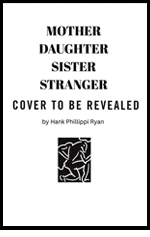
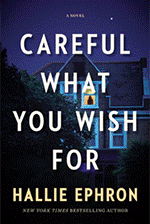
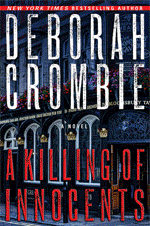
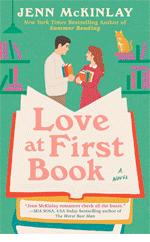
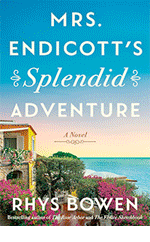

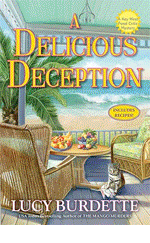
The idea of using setting to show character makes so much sense that I can't really believe I didn't put it together before. :) I like how the idea of using the setting to show character gives a good reason to put details of the setting into the story. I'll have to see if I can figure it out how to do it. So, the setting highlighted in the story should show something about the character or highlight a conflict or otherwise show the reader something more about the characters? Thanks! I have lots to think about now!
ReplyDeleteHi Mary,
ReplyDeleteGreat Post. Your point about the character interacting with the setting made me think about product placement in movies -- the advertiser pays WAY more if the character in the movie actually interacts with the product -- makes it a real part of the story.
Mary, I just wanted to let you know that your online class on pacing came at the perfect time for me and my WIP. It opened my eyes to flaws in my work and made me realize that I was hitting just one note on my hooks.
ReplyDeleteFantastic!
Hi, Mary,
ReplyDeleteI have been trying to make setting a character in my WIP, but I am not sure I am succeeding. Sounds like your class in May is just what I need. Thanks for all of the great information you provide.
Your comments on setting perfectly explain why some descriptions work an others leave the reader cold. Interaction with the environment, point of view, yes! Love your classes. Thanks for the heads up about May.
ReplyDeleteOH, amazing. Wonderful. Welcome, Mary!
ReplyDeleteI guess I never thought about it that way. If someone trips over the fluffy white rug, that's different than "there was (eek!)a white rug on the floor." Or if someone deliberately spills her coffee on the white rug. Or which character would run to blot it up. Or who would know how to get the coffee out. Ah. Stopping now.
Jan, brilliant about product placement.
My WIP involves a boat on the bay, so it definitely should be an active setting. However, some of my readers ask for more boat/water descriptions right away. I find myself writing as if that is a natural setting, as it is to me, but that doesn't answer their questions. On the other hand, when I read mysteries with a setting new to me, I often have the same feeling - but as the novel progresses, I absorb the setting as it contributes to the story.
ReplyDeleteMy question must be - how does one overcome the readers' questions while using the setting as an ongoing addition to the story line as it unfolds?
One problem I've run into while writing the first Key West mystery is how to describe setting that I'm very familiar with, but readers may not be.
ReplyDeleteAny tips Mary on how to choose the details that will work best bringing setting alive? (And ps Nancy Pickard is a wizard at active setting...)
In my wip, a lot of the action happens in the same setting--a boutique run by the protag. How can I make setting relevant each time I use it? I'm thinking start broad, big picture and as the book goes on, narrow down to details? Thoughts?
ReplyDeleteA great post, Mary! I'm currently tussling with writing the Titanic from the POV of an almost-blind woman. Drenching it in emotion works so well, and I also get to say how it smelled, how smooth and new the walls felt, the icy rush of wind as the ship steamed forward on Sunday night. A lot of fun, and a way to make the ship new. Thanks!
ReplyDeleteA TBI agent once told me that every time someone enters a crime scene its changed somehow- Each person brings something in, and takes something away. What CSI techs look for, of course, is what the murderer and the victim have brought to the scene and what the murder walked away with. (Assuming the victim was left behind)But other people change the scene in subtle ways, even if they are trying not to, bringing in (and leaving behind) hairs, fibers, mud, dirt, fingerprints etc. A murderer would bring in a murder weapon, and hopefully leave strong traces of it behind.
ReplyDeleteExpanding on that- think about how we all change a setting as we move through it. I walk through the hallway, and leave a smudged fingerprint on the wall, a splash of coffee on the floor, perhaps some loose hair, (mine and the cats') lint, maybe dirty socks, a half eaten carrot, just a crumb of cookie.
Now all these things wouldn't show up much in my house, there are many fingerprints on the wall, much cat hair sticking to furniture, and cookie crumbs on the table, socks kicked across a floor. Not so in my sister in laws house! Ive never seen a fingerprint on her walls or a sock on the floor. What does that tell you about me, and her?
That was great, Kelly! So much richness here always. And today, best of all because setting in my work AND in my reading is Queen! I rarely read mysteries in settings that I would not want to live or visit. And it's the same for me as a writer. I hope to take readers to places new to them that have character all their own. Thank you, Mary, this energized my drooping day.
ReplyDeleteGreat post! Setting not only tells the reader things about the character or characters that inhabit it, it's also (as Mary points out) a great opportunity to learn about the viewpoint character through his or her reaction to the setting. And a well-described setting adds all the visceral cues that draw readers into a novel, and can actually function as a character itself. So you get double--or triple--duty here!
ReplyDeleteGreat post! As a reader I love to feel I am being taken somewhere, not told about it. We experience the world through all five senses so our description should reflect this. Tony Hillerman was a master at bringing the Southwest to life, taking the reader there. I've tried to emulate him, seeing the world through my character's eyes.
ReplyDeleteJ ~~ Delighted to have the penny drop on how setting can show characterization -- it's so much fun to see how our words can work harder :-)
ReplyDeleteThanks for swinging by today and have fun rethinking your setting opportunities!
Cheers ~~ Mary B :-)
Hi Jan ~~ don't you love seeing the lengths that some shows can go to get the product active? The concept is the same though as what we can do on the page -- not highlight products :-) but looking at what are characters are doing in a setting that adds or doesn't add to the story. Nice observation!Thanks for sharing ~~ Mary B :-)
ReplyDeleteAh Ray ~~ So nice to see you here and thanks for the nice feedback. I'm having as much fun really digging into the subject of Setting as I have in Pacing and I love those ah ha moments -- the more the merrier! Thanks for sharing and swingin by ~~ Mary
ReplyDeleteB :-)
Julie ~~I adore books where Setting is a character in part because the story expands as a result -- and as a reader when we set the book down that sense of place can be so strong that we are still there. Must add a whole lecture to the class to explore the topic -- so fun :-)) Thanks for getting the creative juices flowing!! Cheers ~~ Mary B :-)
ReplyDeleteMary Ann ~~ Thank you for your feedback on my classes. I do like to dig deep and discover why something works or doesn't. Many times when we read only published authors we don't see all the sweat that goes on behind the scenes to pull the individual elements of story together. But if you judge a lot of contests or work with very new writers -- sometimes poor setting, or setting that's flat, jumps out a little more. So here's to raising the bar on powerful settings! Cheers ~~ Mary B :-)
ReplyDeleteGreat stuff. Big reason I read is to go somewhere else. Like Bertram's Hotel.
ReplyDeleteHi Hank ~~ so fun to see you here though I know all the cool people hang out at this blog :-) While an item in a setting should matter in some way to the story I like to look at the bigger picture -- for example is the setting reflecting the emotions of the pov character, is the setting adding a complication to the story, how does the setting change depending on pov character so what one person sees can be a clue the other person overlooked but the reader is pulled deeper into the story because they know an important piece of the puzzle. All sorts of fun juicy ways to maximize setting :-)) Thanks for stopping by -- always delightful to see you! Cheers ~~ Mary B :-)
ReplyDeleteHi Norma ~~ great questions and one many writers struggle with. As readers we need to get oriented within the story quickly -- enough to have a sense of where we are and how that setting matters, what it reveals about the character and is the setting going to work for or against the character's most immediate goals. If you have a pov character who is NOT familiar with the setting you can expand on how much they see and the reader goes along being introduced to a place that's new to both parties -- but if the reader knows this place is familiar to the pov character often times they will allow a little more time to develop the setting as long as they're privy to the changes the pov character is seeing. The part that is frustrating IMO for many readers is when generic or vague setting is used, particularly early in the story -- the broad ocean, the deep blue ocean, the Saragosa Sea -- none of this information is working hard enough and leaving the reader to guess. My recommendation is to read authors that nail setting so well - and study their introduction of new setting - as this is the one place readers will allow you to slow the pacing enough to orientate them -- but make sure every sentence is vital to understanding what's happening. I hope this helps a little -- I could go on and on beause this is what I find so fascinating about learning how to do just this ~~ orientate, inform, entertain and all in a few
ReplyDeletelines :-)) Piece of
cake -- not :-) Cheers ~~ Mary B :-)
One of my proudest moments was when I received a critique from a reader who said The New Jersey Turnpike was the third character in my short story, "Terror on the Turnpike.". (Hi Mary, you can stop laughing now.)
ReplyDeleteYou don't have to put me in for Mary's book, I have it. I've also talken her classes as well as attended her workshops...Impressive and will change the way you tell a story. I hihgly recommend any and all of them.
Hi Roberta ~~ Thank you so much for having me guest here today --- I love chatting with writers who are always looking for ways to ratchet up their writing! If your pov character knows the setting well when you show the reader the setting do it though deep pov -- the specifics that character would know -- type of tree or comparing the weather change to the norm or even wondering how another character who's not familiar with the area might see details. There are so many opportunities. Our biggest challenge as writers is we want to get on to the story so race the characters through place with a vague sense of there was water and buildings and Mo's Chowder House. We don't have to add a lot of Setting but filter through a specific sentence here and there when the setting changes to let the reader be in on the knowledge your character has -- for example your pov character may not see Mo's Chowder House but could smell it mingling with the outgoing tide --a scent of bull kelp and razorback clams -- those specific details that are not secifically about place can still anchor a person solidly into the place without seeing buildings and the shoreline. Make sense?
ReplyDeleteThanks for asking and thanks again for having me visit today!!
Cheers ~~ Mary B :-)
Sorry, just saw when this posted that my dyslexia kicked in. Should be taken and highly.
ReplyDeleteHi Meg ~~ thanks for swinging by here today with a great question. The reader needs to quickly be oriented into the setting and that can be done as the character moves through it, notices details, sensory details that place the botique into a larger context -- the one place that readers allow us to slow the story is when we are first introduced to new characters or a new place in order to get a stronger sense of where we are in space. Without that we remain removed from the story - waiting to get anchored. The longer that happens the less committed we are to reading. Not good. So I recommend studying authors you love -- look specifically at how they weave in setting in the first page or two of the story -- what kinds of details they use that lets you feel in the space. I think you'll be surprised at how simple a few sentences can pull a place together! Hope this helps ~~ have fun with the process! Cheers ~~ Mary B :-)
ReplyDeleteSarah ~~ what a great way to approach setting. Take away the assumed - sight -- and explore the other possibilities. I also like to step out of a Setting and 'see' it through other POV characters who may never come on scene but just to mentally notice what they might notice and why -- it can make for a richer, more three-dimensional Setting. Thanks for sharing ~~ Mary B :-)
ReplyDeleteKelly ~~ Your description tells me I'd feel right at home in your house and your sister in law and mine must be related :-) A perfect example of showing characterization through what is or isn't in the setting description and the absence of details also shows so much. Thank you for sharing!!!
ReplyDeleteCheers ~~ Mary B :-)
Ah Ann ~~ thank you for your kind words!! Don't you love finding an author that so pulls you into a Setting that you can hardly wait till you return. I especially love when I get sucked into a Setting that is the last place in the world that I'd think of visiting and I comeb away adjusting my must-see list. Now that's great Setting!
ReplyDeleteCheers ~~ Mary B :-)
PJ ~~ LOL! Ah yes -- of course I feel that way about almost anything British -- I love watching PBS British Mysteries to see how they can change the mood, tone, theme of a series by what they choose to fous on in setting from bleak and gritty to wamr and cozy. Lots to learn from what is portrayed visually. Thanks for stopping by! ~~ Mary B :-)
ReplyDeleteDeborah ~~ You've nailed it in understanding how versatile Setting can be -- I love it!! Especially since as readers we don't necessarily pull apart a sentence and say - wow - did you see how she/he pacted so much into a line or two of setting :-)
ReplyDeleteThanks for sharing and stopping by today!
Cheers ~~ Mary B :-)
Hey Pat M ~~ how fun to see you here!As the writer who officially showed me the NJ Turnpike I can see how it could make a compelling character :-))Too fun!! Thanks for stopping in and your kind words!
ReplyDeleteCheers till we meet next at a Dunkin Donuts!
Cheers ~~ Mary B :-)
Hi Rhys ~~ I've always loved Hillerman's works in large part to his crafting of a Setting so real it was hard to step out of it when I'd put one of his books down. Sigh! A master craftsman and great role model to emulate! Thanks for sharing ~~ Mary B :-)
ReplyDeleteI'll be in your Active Setting class in May, Mary, and cannot wait.
ReplyDeleteSetting for me is all about mood. I want description of a location to tell me what the setting looks like through the specific mood of the character. If there are mountains, I want to see them as they are yet have them slightly colored by a twist of fear/awe/whatever the character feels at that moment. Not sure if that makes sense, but that's what I look for in setting.
Since I've taken all your classes Mary, I feel like asking a question is cheating. And naturally, I'm biases but "Break into Fiction" is a FAB book for any of you who want to know more about setting and plot. :)
ReplyDeleteMargs
Hi Debbie ~~ delighted to see you here and to know we get to work together come May!! Setting to create mood is very powerful as it is to use Setting to reflect the changing moods of a POV character from loving broad open empty spaces to realizing later that same space means no help is at hand :-) Thanks for swinging by today and sharing ~~ Mary B :-)
ReplyDeleteAh Margs ~~ thank you for the kind words - Break Into Fiction is truly the book Dianna and I wished we'd had to cut years off the learning cruve when we started writing! Thanks for sharing and for touching base today! Cheers ~~ Mary B :-)
ReplyDeleteWow--what a terrific discussion! And so lovely to see so many new "faces"--come back and visit, okay?
ReplyDeleteAnd Mary--you're amazing! Thank you so much..
Hi Mary,
ReplyDeleteThank you so much for this post! I wish I'd read it a decade ago, when I started learning the hard way that my characters needed to do a lot more than exchange witty dialog and reflect on their feelings. :P Of course, I was only twenty then, so who knows how quickly I would have realized that active settings were a necessary fixture within my craft. I've changed dramatically in that time, and so has my writing. Now I'm pleasantly surprised when I receive positive feedback for the strength of my descriptions in my current work-in-progress--I know how far I've come as a writer when settings have become a positive attribute of my craft!
Even so, your post really reminded me how crucial active settings can be in streamlining my writing. I've found that Lawrence Block's comment on watching scenes grow without getting any closer to the end point is still one of my weaknesses. From what you described, active settings are a great way to corral overly long scenes. I often do a mental layout of any given setting and plot out my characters' actions with each other and their environment like they do in theatrical rehearsals (blocking), and it helps a lot. But I will try to apply the rules of active settings to tackle characterization along with the needed plot acceleration, and see how that changes my pacing. I'm excited to try it differently, so thank you again for the great post!